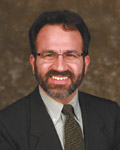October 5, 2011
The “Routine” Eye Exam
 By William Benevento, M.D.
By William Benevento, M.D.
Eye Surgeons Associates
Many people wonder what is involved in a “routine” eye exam, the type of exam you get once every year or two. Most think that if their vision is OK, they do not need to see their eye doctor. Unfortunately, many ocular diseases in their early stages do not give an obvious warning sign. In fact, two of the most common causes of blindness, diabetes and glaucoma, rarely start off with decreased vision. The two goals of the routine exam are to discover any eye problems that need treatment now and to prevent any potential damage to the eye in the future through early detection.
The first step in any eye exam, routine or otherwise, is to talk to you and find out if you have any symptoms of eye disease. We also find out if you have any diseases that could affect the eyes, such as diabetes or high blood pressure. Your current medications are written down (some of them can contribute to cataracts, dry eyes, and glaucoma), and as some eye diseases are hereditary, we also ask you if your relatives have any eye problems.
The first eye test is to check your vision. You should be able to read the 20/20 or 20/25 line on the chart with your glasses on (if you need any). Anyone with vision less than this needs to be checked for new glasses. Reading vision is also measured as some problems, such as cataracts, can affect distance vision more than reading vision. Side vision is checked for any losses that would suggest a stroke or glaucoma. An Amsler Grid, which looks just like graph paper, tests central vision for any waviness or spots. These could indicate problems such as diabetes or macular degeneration in the retina, the light sensitive layer coating the inside of the eye. Eye movements are checked for any weakness or crossing, and the pupils are looked at with a bright light. If the pupils react unequally to the light, it could suggest problems with the nerves that bring the information from the eyes to the brain. Next, eye pressure is tested as a screening for glaucoma. Finally, the eyes are dilated for the second half of the exam. All this frequently happens before you even see the eye doctor.
The first thing that the doctor does is to take a look at your chart and ask you about any problems that you have been having with your eyes. We recheck anything suspicious in your examination up to this point. The next test is the slit lamp exam. The slit lamp is a table mounted microscope that gives us a magnified view of the eye. With it, we can look at the front half of the eye for any problems including infection, inflammation, dryness, or cataracts. The cause of most eye irritation or pain is diagnosed at the slit lamp.
The final part of the evaluation is the dilated examination. Dilating drops enlarge the pupil, giving us a much better view into the back half of the eye. Though dilation also makes you somewhat light sensitive and blurs your reading vision for a few hours (distance vision usually does not change much), it still is a very important part of the exam and should not be skipped. The dilated eye is one of the few places in the body where we can see the blood vessels. Because of this, we can frequently pick out patients with poorly controlled high blood pressure, diabetes, or a high risk for strokes. A good view of the nerve as it enters the eye lets us diagnose early glaucoma, high pressure around the brain, and inflammations of the nerve such as multiple sclerosis. A careful evaluation of the retina reveals evidence of macular degeneration, HIV/AIDS, or rips which can lead to detachments.
No examination is complete without a thorough explanation of any findings. If your vision is not 20/20 or 20/25, you should know why and what, if anything, can be done about it. You should have a general understanding of the health of your eyes before you leave the office; ask questions if you do not. Our sight is the most important of our senses; we owe it to ourselves to get it checked regularly.
President of Eye Surgeons Associates, Dr. Benevento is a board certified ophthalmologist. He has a special interest in diabetes and the surgical treatment of cataracts with the latest techniques. Dr. Benevento practices at our offices in Bettendorf and Muscatine Iowa. For more information, please visit our website: www.esaeyecare.com.
Filed Under: Health & Wellness
Tags: Amsler Grid, Causes Of Blindness, Central Vision, Distance Vision, Dry Eyes, Eye Diseases, Eye Eye, Eye Movements, Eye Problems, Eye Surgeons, Eye Test, Graph Paper, High Blood Pressure, Ocular Diseases, Paper Tests, Routine Exam, Routine Eye Exam, Sensitive Layer, Side Vision, Waviness
Trackback URL: https://www.50pluslife.com/2011/10/05/the-%e2%80%9croutine%e2%80%9d-eye-exam/trackback/


